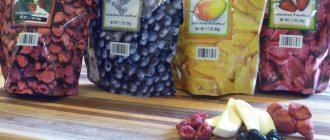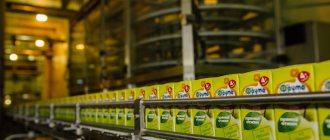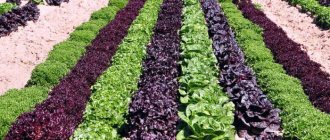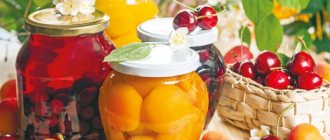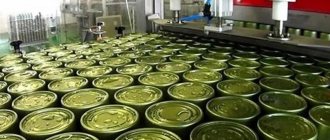Poorly thought out, and in some regions completely absent, well-organized storage of fruits and vegetables in warehouses forces the country to depend on root crops, stone and pome fruits, berries and everything else imported from other countries. More than a third of grown vegetables are sent to landfill due to non-compliance with storage conditions, without bringing in even a penny of profit.
This state of affairs may continue further if emergency measures are not taken by building permanent or prefabricated warehouses with modern automatic ventilation systems.
In the Russian Federation, more than 40 million tons of fruits and vegetables are harvested annually. We occupy 2nd place in the global potato production industry and 11th place in the production of fruits and vegetables. At the same time, losses during storage of products amount to more than 30% . The result is that more than 50% of fruits and vegetables are supplied from abroad.
The main reason for such incredible losses is the morally and technologically outdated refrigerated storage system, which does not provide long-term storage. And the remaining part of the products is much inferior in presentation to products from abroad.
Organizing the storage of vegetables - what needs to be taken into account?
After the end of the harvest season, affordable prices for fruits and vegetables are replaced by higher ones. This is due not only to the high cost of building or renting warehouses, but also sometimes to the wrong choice of storage method. Extra costs where cheaper methods can be used increase costs.
Requirements for ventilation systems
Modern technology for storing fruits and vegetables in warehouses involves a fully automated storage ventilation system, controlled by an operator from a remote control, which itself takes in air from outside or inside the room, cools or heats the mixture, and determines the rate of air flow emission.
Installation of an automatic ventilation system
in a vegetable storehouse it performs the function of maintaining air exchange, removing CO2, ethylene, providing drying, heating, and “treating” regimes for root crops.
- active ventilation
system provides the supply of both external and internal air or a mixture of them at the required temperature - It is possible to change the ventilation intensity in individual zones (rooms) of the storage facility using control devices
- The humidity control system ensures the required level of relative humidity in the premises.
You can read more about the operating principles of automatic ventilation systems using the following links:
- ventilation system for fruit and vegetable storages from AgroHranStroy
- Ventoglas ventilation system
- automatic system Micro 2004+
Storage errors
However, the presence of a modern storage facility does not mean that storage will automatically be at a high level. When using technologies that are expensive in terms of construction and operation, it is very important to avoid mistakes that lead to serious losses and do not allow the costs to be justified. Errors often begin at the design stage, notes Alexander Gorbatenko. The ability to maintain the required temperature conditions at the enterprise will depend on correctly selected building materials with the necessary thermal conductivity. In different climatic zones of the country, the parameters and requirements for building materials differ. Very important aspects are the design of storage systems and selection of equipment. “A significant role is played by the quality of assembly and installation of equipment, as well as the need to train personnel who will subsequently work with it and manage it, changing storage modes,” says Gorbatenko.
Before storing products in storage, it is necessary to clear it of debris (soil, remnants of tubers, vegetables). Then the room must be dried and disinfected - treated against diseases and pests, recommends Emilia Zeer, head of agro development (Moscow region). It is important not to forget about disinfection of ventilation and storage equipment. “This is an important process because it is the basis for minimizing storage losses,” she emphasizes. Poor condition of potatoes or vegetables received for storage can also lead to high losses. “Tubers must be healthy, clean, dry and ripe, so it is important not only to promptly combat diseases and pests during the growing season, but also to correctly store the products,” Zeer points out.
Among the common errors in the operation of modern facilities is non-compliance with basic storage parameters - temperature conditions, the level of required humidity and ventilation mode. If they are neglected, crop losses can reach 40%. “In the first year of operation, our farm encountered difficulties in the process of storing potatoes in storage: we did not have a transshipment base, we lacked the necessary equipment, and the potato harvesters were outdated,” shares Zeer. “We had to invest in the purchase of new Grimme combines, equipment for the transshipment base and all the necessary equipment for sorting and storing products.” The head of the Prinevskoye vegetable and potato storage and processing complex (Leningrad region), Arkady Shrub, agrees with her: most often the stowage rules are violated. During storage, the temperature of the product should also not be allowed to increase, as this will lead to spoilage. “If we talk about cabbage and carrots, the faster the cooling occurs, the better they will be stored,” says the manager. “Although some manufacturers believe that the cooling speed is not so significant, we still stick to it.”
The general director of the Tyumen agricultural holding "Krimm" Gennady Ryazanov names a lack of ventilation among the typical mistakes. Vegetables located at the end of the air ducts especially suffer from a lack of air supply. In some cases, a building is first built, and then specialists think about how to turn it into a technological storage facility, says Andrei Grobovoi. In this case, it may be difficult to ventilate the product and effectively use space. Cabbage and carrot producers often make mistakes when trying to save energy, he knows: “At subzero outside temperatures, they turn off mechanical cooling and use outside air for this purpose. However, in winter, the air has very low humidity, which leads to carrots drying out, they become soft, losing weight, and most importantly, their marketable qualities.”
Storing potatoes in stages
In Razdolie, a Moscow region, potato storage is carried out in several stages, which require maintaining different temperature and humidity conditions, says Emilia Zeer. After harvesting, it is necessary to sort the tubers and dry them. The potato storage temperature at this stage should be +15-17 °C, and its duration can reach 12 days (depending on the condition of the root crops). The treatment phase ensures the ripening of the tubers, as well as the healing of the damage remaining at the beginning of the stage. To ensure these processes, it is necessary to increase the storage temperature to +18-20 ° C and increase air humidity to 85-95%. The duration of the treatment phase can be from 15 to 18 days. Before storing potatoes for long-term storage, they require cooling, which can reduce the activity of various vegetative processes in the tubers. At the same time, optimal storage conditions for potatoes can be obtained only at +4-5 °C, and the temperature must be reduced by 0.5 °C for high-quality clean root crops, and for damaged tubers - by 1 °C daily. Throughout the entire main storage period, maintaining relative humidity within 85-95% is required. Such conditions are achieved by ventilation with a mixture of external and internal air, which allows to ensure optimal temperature and humidity parameters of the atmosphere in the storage facility at minimal financial costs. Before removing root crops, it is necessary to gradually warm up the tubers. “This is because chilled potatoes are quite susceptible to mechanical damage,” explains Zeer. The temperature rises to +15-18 °C by reducing ventilation, which leads to self-heating of the tuber mass. It is impossible to provide the temperature and humidity required for the various stages of storage using natural ventilation, she points out. The optimal solution is the use of modular-type automatic ventilation systems, which is used in the Razdolye vegetable storage facility.
Storage methods
Fruit storage is a priority task for the agro-industrial complex, which annually loses almost half of the harvest. Collected, sorted and sorted hard vegetables are stored in three ways:
- in bulk (in bulk on the floor),
- in containers or boxes,
- on the racks.
Bulk storage
It is considered the cheapest and has little effect on the final cost of the product. It is chosen for inexpensive, dense fruits that have a thick protective skin that resists mechanical stress or tolerates it well (used for storing potatoes, onions, unripe tomatoes, etc.).
Maintaining the optimal temperature in such a warehouse is carried out using air ducts, coolers and heaters. The last two are used depending on the temperature outside the perimeter of the room. In winter, the air drawn in from the street is heated, mixing in the required proportion with the atmosphere of the storage facility. In summer it cools down.
As a result, all year round, with the exception of months of non-use, the warehouse is in the same temperature and humidity environment - the most suitable for the fruits stored in it.
Air ducts in bulk storage facilities are located between the floor and the ground on which the room is located. They are made of flexible or rigid aluminum pipes, laid according to the pattern chosen in a particular warehouse. Through them, a moistened, cooled, heated or mixed with gas air flow is supplied, penetrating through the entire thickness of the fill.
The photo shows semicircular ventilation ducts for ventilation of vegetables when stored in bulk (more details here)
It weathers every root vegetable, vegetable or fruit, preventing the development of bacteria and microbes that cause spoilage or loss of their presentation and nutritional value.
Fruit storage conditions are shown in the table:
| Products | Storage temperature, °C | Relative humidity, % |
| Hard-fruited vegetables in protected ground | ||
| Potato | +2..+4 | 85-95 |
| Cabbage | 0..+1 | 85-90 |
| Onion | +2..+8 | 70-80 |
| Carrot | 0..+1 | 90-98 |
| Radish | 0..+1 | 90-95 |
| Beet | 0..+1 | 90-95 |
Container storage
For warehouses equipped for storing crops or purchased products in containers or boxes, a cooling scheme using a pressure wall is most often used. Containers (large, small), plastic, cardboard or paper boxes are installed in stacks, maintaining a gap for the passage of a jet of air mixture forced by the rear wall.
Advantages of container storage:
- good ventilation of products;
- control and the ability to localize damaged products;
- Containers are quite easy to move using forklifts around the warehouse.
Disadvantages of container storage:
- costs for purchasing containers;
- the need to treat containers to prevent infections;
- the need for additional space for storing empty containers.
The type of vegetables or fruits, degree of ripeness, storage time are factors influencing the choice of air exchange scheme. It can be a so-called serpentine, tunnel, with horizontal and vertical flows, etc.
Serpentine and tunnel ventilation scheme for container storage
Choosing a container for storing vegetables
All varieties of cabbage, cucumbers, tomatoes and much more are best placed in containers. This reduces the mechanical impact on the batch, but maintains high efficiency in the use of storage space.
Containers for storing vegetables are placed one on top of the other, occupying useful space. There are small passages left for the controlling inspector to monitor the health of the products in the warehouse.
Wooden containers are the best solution for storing vegetables in a warehouse (read more here)
The entire range of containers is divided into
- large, with a capacity of 400-500 kilos,
- and half-container - 200-300 kg.
The final choice of size is determined by the recommendations given by experts in matters of storing a particular type of fruit and vegetable. Carrots, for example, are not placed in a layer of more than 1.5 m. This leads to the obvious - they are poured into a semi-container.
Important! Review of the best containers for storing fruits and vegetables in a warehouse
Storing carrots, beets, cabbage, radishes
The storage of these crops does not require active ventilation, but unlike potatoes and onions, they require more humid air. Storage of crops is organized in refrigerated chambers, container type. To achieve the required temperature and humidity, air coolers with a built-in fan are used.
Fruit storage - what do warehouse owners need to know?
Storing fruits in warehouses is somewhat more complicated than storing vegetables. Conditions for long-term storage of fruits in a warehouse involve the creation of the so-called. controlled gas atmosphere (CGA) in storage .
The main thing, as in the case of vegetable crops, is compliance with the temperature and humidity level of the environment (see the table of fruit storage modes)
It is noteworthy that ripe and green fruits require different numbers on the display of the machines that maintain the set parameters. This, with the correct selection of specimens for long-term storage, is a sure way to establish progressive ripening of stored products, providing the consumer with exceptionally high-quality fruit, regardless of the time of year.
1- automatic gas analysis and control system; 2- Membrane nitrogen installation; 3 - Carbon dioxide adsorber; 4- Atmosphere converter; 5 - Refrigeration unit with heat recovery.
Fruit storage technology involves the participation of ethylene and carbon dioxide in the process, which affect the biochemical processes taking place inside the fruit. The low oxygen content in the forced air flows ensures the longest possible shelf life, sometimes amounting to about six months.
Fruits with hard skin or winter varieties with a denser texture are stored in small containers or boxes. Quickly perishable fruits are laid out on special trays in a small layer to prevent spoilage from squeezing the lower ball with the upper one.
In combination with the above storage methods, additional ones are used - treating the surface of the fruit with compounds that prevent rotting, germination, evaporation of moisture, leading to loss of presentation and nutritional value of the fruit. This can be: treatment with formaldehyde, chlorine water, sulfur dioxide, ozonation, waxing, wax irrigation, exposure of vegetables and fruits to ultraviolet light.
Refrigerated warehouses for fruits and vegetables
Vadim Grinberg
For people who are far from understanding modern storage technologies, the concept of “vegetable storage”, familiar from childhood, can evoke not very pleasant visual and olfactory associations. However, for those who are “in the know”, the gigantic technological leap that has taken place in this area over the past 20–30 years is quite obvious. A modern warehouse for storing fruits and vegetables is equipped with a whole range of engineering systems that make it possible to turn the seemingly simple task of preserving the crop for as long as possible into a high-tech controlled process.
To appreciate the complexity of this process, you need to at least briefly dwell on what, in fact, problems have to be solved during the storage process - what natural processes that occur with fruits and vegetables that are so coveted in the cold winter time have to be fought.
Plant foods, which include vegetables and fruits, contain from 75 to 95% water. From the moment of harvesting, chemical and microbiological processes begin to occur in fruits and vegetables, the nature of which is determined by biological functions. The main physiological process that continues in fruits and vegetables after harvest is respiration. The intensity of respiration and associated metabolic processes depends on temperature. In particular, fruits and berries are characterized by so-called post-harvest ripening, during which, due to the transfer of nutrients from the pulp, seeds are formed. It is accompanied by a decrease in the amount of chlorophyll (the green color gradually disappears) and the appearance of other pigments, the accumulation of ethylene, and the content of vitamins and moisture decreases. Thus, the possible shelf life of vegetables and fruits is determined mainly by the degree of their maturity at harvest.
In practice, there are two degrees of maturity - removable and consumer. Removable maturity is determined by the need for subsequent transportation and storage capabilities, and consumer maturity is determined by suitability for use. From the consumer's point of view, one of the main processes occurring in fruits and vegetables after harvest is the evaporation of moisture. Evaporation leads to weight loss and wilting. Noticeable wilting of fruits occurs with a loss of 4–6% moisture, and of berries and leafy vegetables with a loss of 1.5–2%.
Consequently, the main task during storage is to inhibit physiological and biochemical processes, prevent the development of phytopathogenic microorganisms and reduce moisture loss. One effective way to achieve this result is through rapid pre-cooling. The rate of such cooling depends on the type of fruits and vegetables. If harvest and consumer ripeness coincide, which is typical for berries (including cherries, sweet cherries) and cucumbers, or occurs after a relatively short period, as in apricots, peaches, plums and melons, the cooling process should take no more than 5 hours. And, for example, for winter varieties of apples and pears that reach consumer maturity during long-term storage, the cooling process can take up to a day.
That is, the first task that must be solved, regardless of whether vegetables and fruits are stored in close proximity to the collection site or transported to the storage site over considerable distances, is to ensure the possibility of pre-cooling. It can be carried out in conventional storage chambers with an air exchange rate of 30–40 times per hour, in special pre-cooling chambers with an air exchange rate increased to 60–100 times per hour, in intensive air cooling devices, including tunnel type, and also with cold water by irrigation or immersion method.
The solution to the problem of sufficiently long-term storage of vegetables and fruits, therefore, can be developed in two main ways: storage in close proximity to the harvest site and storage in the region of consumption. The regions of the most concentrated consumption are megacities, where the cost of storage is quite high due to high rental rates for warehouse space. Nevertheless, this option may well be considered for imported fruits and vegetables purchased in large quantities, including ship shipments.
However, the most interesting from a commercial point of view is the option of territorial unification of the process of growing, harvesting and subsequent storage. In this case, warehouses for storing fruits and vegetables can be built using one of the relatively inexpensive construction technologies, in particular, using lightweight metal structures or using frameless technology. Frame storage facilities are made from prefabricated lightweight metal structures. As a rule, sandwich panels are used to create a thermal insulation circuit; profiled steel sheets are used for external cladding. This design is relatively easy to scale, allowing you to increase storage capacity.
The use of frameless construction technologies makes it possible to speed up the process of constructing storage facilities through the use of panel molding machines. The structures created as a result of the use of this technology are highly durable and resistant to wind and snow loads. Their significant advantage is also the lack of a powerful foundation. Warehouses built using the frameless method can be one- or two-layer, with a layer of insulation between the layers.
In the future, in accordance with the task, options with varying degrees of technological equipment can be selected. This is determined by the type of stored product - homogeneous or assorted, the method of its storage - in bulk or in packaging, and the expected shelf life. Accordingly, during long-term storage of different types of products, it is necessary to ensure temperature zoning.
The most practical option for storing vegetables and fruits is using a refrigeration system and ventilation system. Its problems are discussed in sufficient detail in a large number of publications concerning the construction and equipping of medium-temperature refrigerated warehouses. At the same time, special technical devices that are equipped specifically in warehouses for storing vegetables and fruits, primarily equipped with systems for organizing a controlled microclimate and controlled atmosphere, are of great interest. The organization of a controlled atmosphere is a technology that can significantly increase the shelf life of products and maintain its quality. Storage of fruits and vegetables in a controlled gas environment occurs in special vegetable storage facilities, refrigerators, polymer films, and polyethylene containers.
There are also several levels of difficulty in this area. At the first level, a controlled carbon dioxide content is mainly achieved while maintaining the required temperature and air humidity. In this case, the parameters of the controlled atmosphere approximately correspond to an oxygen content of 3-4% and carbon dioxide of 3-5%, while the oxygen content in a normal atmosphere is about 21%, nitrogen - 78%, carbon dioxide 0.03%. Exceeding the CO2 content leads to fairly rapid spoilage of vegetables and fruits, and, in particular, an unpleasant taste and smell may appear, the development of some fungal formations can be observed, and the presentation of stored vegetables and fruits may deteriorate. The problem of absorbing excess carbon dioxide is solved by using scrubbers (sometimes called gas scrubbers). Using scrubbers, carbon dioxide and part of the ethylene produced are removed from refrigeration chambers. The removal method is quite simple and is based on the use of activated carbon, which adsorbs gas molecules. Air from the refrigerator compartment is pumped through the activated carbon using a low-pressure fan, which consumes a minimum of electricity, and then returned back.
A more complex system for creating a controlled atmosphere involves reducing the oxygen content to 2–5% and carbon dioxide to 1–3%. This is achieved by displacing them with nitrogen, for which a generator is integrated into the system, which produces it from the surrounding air. The nitrogen generator consists of two interchangeable tanks containing carbon molecular sieves that can adsorb oxygen molecules over a period of time. When one of the tanks becomes saturated, it automatically switches to the other tank. At this time, the regeneration process is carried out in the filled tank.
The third, highest from the point of view of technological implementation, level of creating a controlled atmosphere provides not only an ultra-low concentration of oxygen (within 1–1.5%) and carbon dioxide (0–2%), but also a reduction in the content of fruit and vegetables ethylene. This scheme requires the use of another class of devices - a catalytic ethylene converter. Ethylene gas is released by vegetables and fruits and stimulates their ripening, so controlling its content makes it possible to store them for a long period of time.
There are ethylene catalytic converters on the market from many manufacturers. The general principle of their operation is based on forced air recirculation over a catalyst bed stored at elevated temperature. During the catalytic interaction of ethylene with atmospheric oxygen, it decomposes into carbon dioxide and water.
Using a converter, you can achieve a ratio of ethylene to the total volume of air in the chamber of 1/109 without the use of toxic chemicals. Thus, the process of air purification in refrigeration chambers does not have a negative impact on the environment. Equally important is the small amount of energy required to operate the converter. This is achieved through heat recovery in a closed converter and refrigeration chamber system.
However, the process itself, as a rule, does not end with the organization of storage. It is also necessary to provide for the technical stage of imparting marketable qualities to vegetables and fruits, that is, to organize the ripening process immediately before sending the products to retail outlets. Let's consider this process using the example of such a well-known fruit as a banana. These fruits are native to the tropics and subtropics, but are commercially grown primarily in South and Central America. Bananas are collected unripe, and during the journey and upon arrival at points of consumption they are ripened in warehouses. Bananas are delivered to Russia by sea on powerful refrigerated vessels, the refrigeration units of which make it possible to preserve the fruit in a state of “removable” ripeness throughout the entire transportation period. The shelf life can vary from 28 days from collection to 40–50 days. Its increase is achieved through the use of a controlled atmosphere during storage.
In preparation for retail sale, the product is brought to a certain degree of maturity by keeping it in aeration chambers. The ripening process is stimulated by ethylene (as opposed to the storage stage, when the ethylene content, on the contrary, decreases). Treatment with ethylene is carried out once.
The process of bringing picked unripe fruits in storage facilities, warehouses or specially equipped chambers to a state of consumer ripeness is called ripening. The ripening mode can be accelerated (up to 4 days), normal (5–6 days) and slow (8 days). Higher fruit quality is observed when bananas are ripened slowly at lower temperatures. In summer and winter, the ripening temperature range differs. If hypothermia is allowed during the ripening process, longitudinal brown streaks appear in green bananas under the top layer of the peel, and the peel becomes gray. The result of increasing the temperature beyond the optimal range is softening of the pulp, weak fruit legs, burst skin and brown spots on the greenish-yellow skin. The subsequent storage period is also significantly reduced.
In the ripening chamber, it is necessary to maintain a high level of humidity - 85–95% to maintain presentation and prevent loss of moisture from vegetables and fruits. During this process, both the temperature of the air in the chamber and the temperature of the fruit pulp are controlled (since the fruit produces heat during the ripening process). Optimal ambient temperature for the ripening process: +15…+18 °C.
Summarizing the above, it can be noted that the technological scheme of a modern high-tech complex for long-term storage of vegetables and fruits should include an accelerated pre-cooling stage (before storage or before transportation to the storage site). A multi-purpose (for storing various types of vegetables and fruits) complex should have storage chambers with automatic temperature control in the range from –2 to +7 °C with a system for maintaining the required level of air humidity.
If storage is carried out under controlled atmosphere conditions, then the storage facility, along with the necessary set of refrigeration and ventilation equipment, can be equipped with scrubbers, nitrogen generators and ethylene converters. The final stage is important - giving the products a marketable appearance and transferring them from the refrigerated state in which they were stored to a state corresponding to the conditions of sale. At the same time, condensation should not form on the products. This operation is performed in so-called “heating chambers”. In addition, at this stage the process of ripening of fruits and vegetables can be realized, for which the storage facility is equipped with ripening chambers.
All the processes we have considered require not only expensive equipment, but also strict adherence to all parameters. So, before enjoying the taste and aroma of a just purchased “winter” apple, it would not hurt to remember that its appearance on our table was preceded by a complex, very technologically advanced and such an important process of preserving its presentation and consumer properties.
